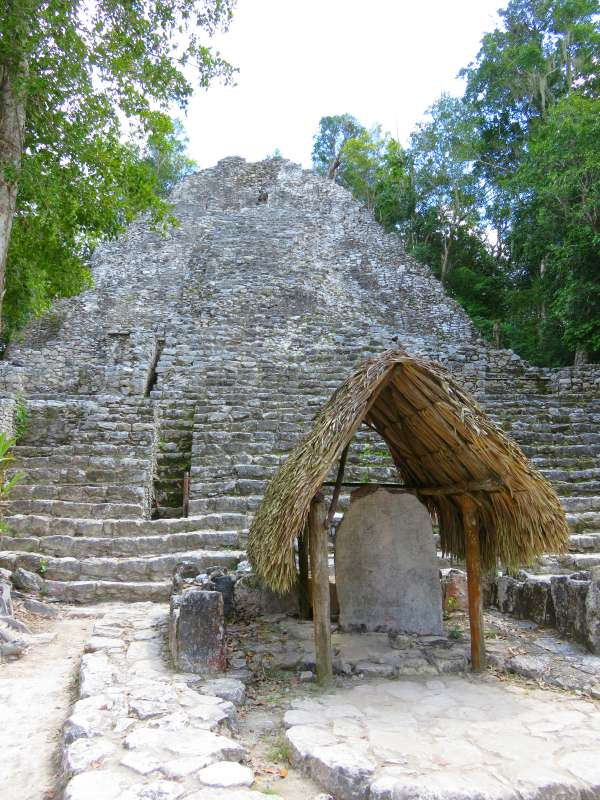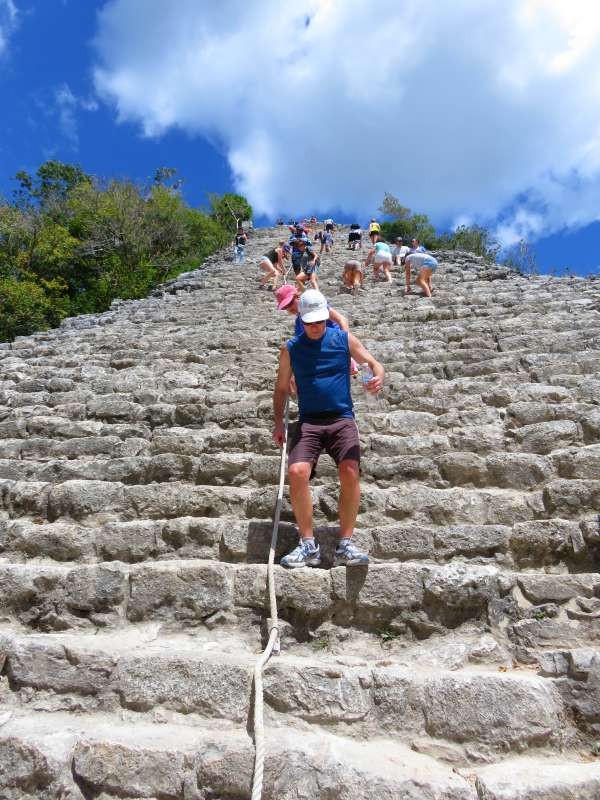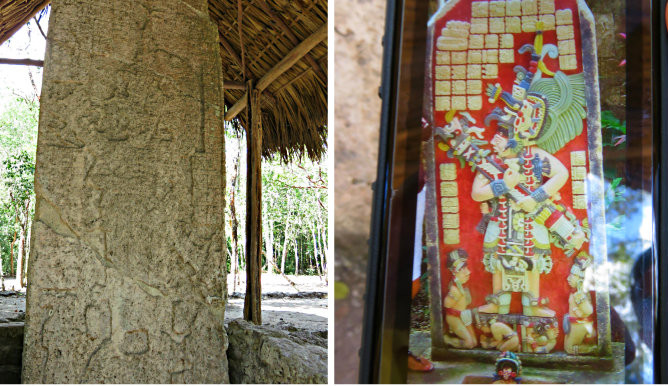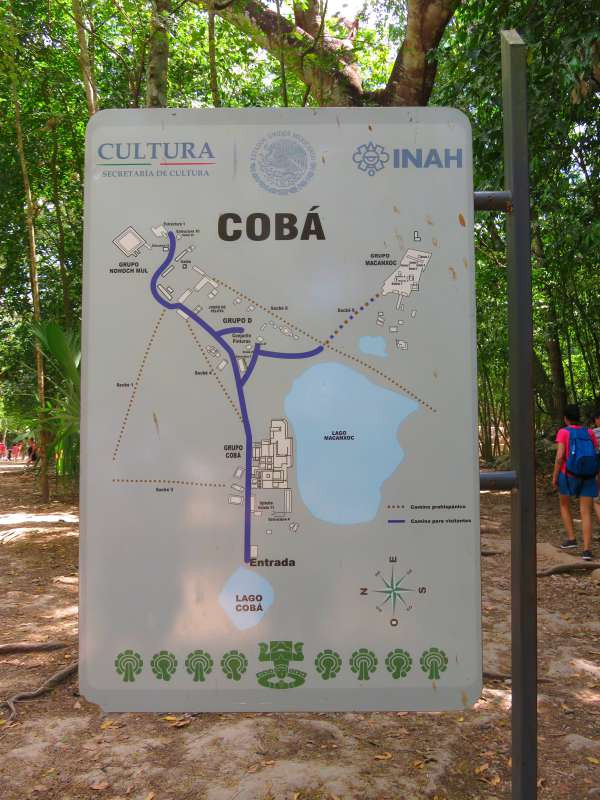Coba, a significant Mayan city in its time, offers a fascinating journey into Mexico’s rich history. Located in the Yucatan Peninsula, the Coba ruins are not just one structure but a collection of groups, each with its own unique character and history, connected by jungle paths. Exploring Coba provides a unique experience compared to other Mayan sites, allowing visitors to immerse themselves in the natural environment as they discover ancient wonders.
The archaeological site is broadly divided into several groups, each named to reflect its key features or prominent structures. As you enter the site, the first major area you encounter is the Coba Group. Conveniently located near the entrance and bicycle rentals, this group features La Iglesia, also known as ‘The Church’, which is Coba’s second tallest pyramid. Its imposing presence is a testament to Mayan architectural prowess. Alongside La Iglesia, the Coba Group also houses a classic Mayan ball court, offering a glimpse into the ceremonial and sporting life of the ancient inhabitants. Interestingly, another structure within this group is simply named ‘Structure No. 4’, highlighting the ongoing archaeological exploration and discoveries at Coba.
 La Iglesia Mayan pyramid at Coba ruins, Mexico, showcasing ancient architecture and jungle setting
La Iglesia Mayan pyramid at Coba ruins, Mexico, showcasing ancient architecture and jungle setting
Moving deeper into Coba, you’ll reach the Nohoch Mul Group, home to the site’s most iconic structure. The Nohoch Mul pyramid, meaning “Big Mound” in Mayan, stands at an impressive 42 meters (138 feet). While it was once considered the tallest pyramid in the Yucatan Peninsula, it is now recognized as the second tallest, slightly shorter than Calakmul in Campeche. Despite this, Nohoch Mul remains a breathtaking sight, equivalent to a 12-story building rising from the jungle canopy. A significant draw for visitors is the opportunity to climb Nohoch Mul, offering panoramic views across the vast surrounding jungle. The climb, though steep, is aided by a rope down the center of the steps, and the reward is an unparalleled vista.
Further exploration leads to the Paintings Group, named for the vibrant murals that once adorned its buildings. While time and the elements have faded these colors, the remnants offer a hint of the artistic richness of Coba. Imagine these structures in their prime, vividly painted and bustling with activity.
The Macanxoc Group holds historical significance, particularly for its stelae. These Mayan stelae are intricately carved stone monuments, resembling pillars or tablets, that document important dates and events. Notably, Stela 1 in this group references December 21, 2012, the date that marked the end of the first Great Cycle in the Mayan Calendar. This date was famously, and inaccurately, associated with predictions of the world’s end, showcasing how Mayan calendar interpretations have sometimes been misconstrued. The stelae at Macanxoc offer valuable insights into Mayan history and calendrical systems.
An integral part of the Coba site are the sacbeob (singular: sacbe), meaning “white roads.” These elevated white stone pathways are characteristic of the Yucatan Peninsula and served as important routes connecting Mayan cities. Typically, a sacbe was about 1-2 meters high and 4.5 meters wide. The sacbe originating from Coba’s main pyramid is particularly impressive, stretching for an astounding 100 kilometers (62 miles). While exploring Coba, it’s important to distinguish between the dedicated sacbeob and the visitor paths. The ‘caminos para visitantes’ are the tourist paths, which occasionally intersect with the ancient sacbeob, offering a tangible link to the Mayan transportation system.
Visiting Coba Ruins Mexico is an enriching experience, offering a blend of history, adventure, and natural beauty. From the towering Nohoch Mul pyramid to the intricate stelae and the ancient sacbeob, Coba provides a comprehensive look into the fascinating world of the Mayan civilization.
 Visitors climbing Nohoch Mul pyramid at Coba ruins, Yucatan, Mexico, experiencing ancient Mayan site and jungle views
Visitors climbing Nohoch Mul pyramid at Coba ruins, Yucatan, Mexico, experiencing ancient Mayan site and jungle views Ancient Mayan stela at Coba ruins, Mexico, depicting intricate carvings and historical significance, both in present condition and artist's rendering of original appearance
Ancient Mayan stela at Coba ruins, Mexico, depicting intricate carvings and historical significance, both in present condition and artist's rendering of original appearance Map of Coba archaeological site, Mexico, illustrating sacbeob as dotted lines and tourist paths as purple lines, highlighting Mayan road network
Map of Coba archaeological site, Mexico, illustrating sacbeob as dotted lines and tourist paths as purple lines, highlighting Mayan road network